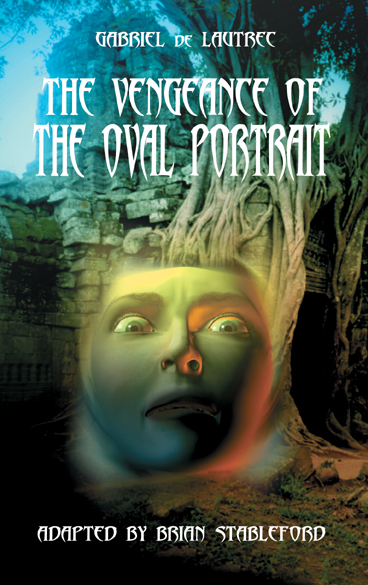Review by Glenn Russell
If you like Poe you will love Lautrec, December 27, 2013 (revised
July 3, 2014)
Brian Stableford writes an eight page introduction giving us all the
cultural, historical and literary context we need to gain an appreciation
for the life and times of Gabriel de Lautrec (1867-1938), a French decadent/symbolist/fantasy
writer much influenced by his friend and mentor, Alphonse Allais, and
also by Charles Baudelaire and Edgar Allan Poe.
Each of these forty-five highly provocative short tales (most about five
pages long) will give you a baroque mind-blowing experience. We encounter
bizarre events, deeply twisted psychological states and surreal worlds.
If you like Poe you will love de Lautrec. For the purposes of this review
and to provide a small taste, here are some quotes from four of the tales
with my brief comments:
The Vengeance of the Oval Portrait
This tale takes place in Medieval Portugal, a tale having a fairy-tale
quality as in ‘There once was a king’, a tale where one Don
Arias Alilaya had a father who abducted a beautiful young dancer named
Juana. When the father spent too many of his days out hunting, Juana became
bored and took a lover. After discovering Juana’s infidelity, the
father arranged a mortal combat with the lover. However, prior to the
time of combat, Juana slipped a drug into the father’s drink; the
effect was such that Juana’s lover was able to kill the father. Don
Arias made his return to the castle in time to see the lover plunge a
sword into his father’s throat, and, in an act of revenge, killed
the lover. Observing these happenings and frightened for her life, Juana
flees. Don Arias reacts by expelling all woman from his kingdom.
Lonely, lovesick for a woman, Don Arias lives a monkish life for months.
One day he discovers an oval portrait of a beautiful woman and falls madly
in love with the portrait, so madly in love he takes extraordinary steps
to bring the portrait to life. We read, “He consulted old grimoires
and learned the formulas of incantation. All day and all night liturgical
prayers rose up in the bedroom transformed into a temple, addressed to
the idol who smiled ironically and insouciantly, seemingly awaiting the
moment when it would please her to emerge from her colored exile.”
Rather than spoiling the tale by giving away the ending, let me just
say that Gabriel de Lautrec provides a supernatural twist, the image of
which will stick with a reader for some time. One further note: although
not included in this collection, de Lautrec also wrote stories for children.
Many of tales in 'The Vengeance of the Oval Portrait' are straightforward,
accessible and have a magic, childlike quality most appealing.
The Warning
A young woman beckons Reverend P.W. Morrow to the home of a gravely ill
gentleman who needs to make his peace with God. “She was still young,
and appeared to belong to the best society, but her clothes were slightly
old-fashioned, and her fixed gaze has something distant about it.”
The reverend goes but is met by a servant who wonders if the man of God
is really a practical joker or a madman. Why does the servant think such
a thing? Rather than saying anything further, let me simply note there
are several rather intriguing and unexpected twists in this unforgettable
tale that will prompt multiple re-readings.
A Macabre Wager
An older doctor reflects on stories told by students, usually involving
much drinking and a fair share of hell-raising, but there is one story
he is compelled to relate, a ghastly story of a headstrong, arrogant student
having the upmost faith that reason conquers all fear. We read, “To
convince us, moreover, he gladly agreed to lock himself in the dissection
room that night, where the cadaver of a young woman was on the wooden
table, having been brought in that very morning, and to drive a dozen
nails into the edge of a table with a hammer, as the amphitheater clock
sounded the twelve strokes of midnight.” I wouldn’t want to
spoil the ending but please keep in mind Lautrec’s favorite author
wrote The Raven and The Black Cat.
A Cubist Tale
Put aside all thoughts of straight-forward linear storytelling as you
read this tale. Lautrec anticipates the automatic writing and surrealism
of Guillaume Apollinaire and others with such sentences as, “Meanwhile,
the crocodiles were advancing in silence, holding puce silk umbrellas
over their heads with firm hands in order not to moisten their crushed
velvet stocking-tops and Russian leather boots with their hypocritical
tears.” and “Cutting through the canvas background, even though
it represented a delightful Watteau landscape, an obscene triangle appeared
at the biconvex window of the giant anteater.” Keep in mind Lautrec
regularly used hashish. Toward the end of the tale, the author pens what
will become one of my all-time favorite lines: “He remained pensive
momentarily, listening to the hairs of his beard grow.”
|


